Content
How to Measure Return on Investment for E-commerce

Time to read: 20 minutes
Calculating return on investment (ROI) is a crucial measure of success for any e-commerce business. It provides insight into the performance of an organization and shows how profitable investments are over time. Measuring ROI accurately helps businesses understand which strategies are working and where improvements need to be made. By knowing their investments; ROI, businesses can make decisions that will maximize their profits and help them stay competitive in a dynamic e-commerce landscape. In this article, we'll discuss how to measure ROI for e-commerce businesses, what a good ROI is for e-commerce investments, and provide some benchmark numbers to measure progress. By understanding these factors, businesses can measure and track their ROI and make informed decisions to maximize profits.
Why Do You Need to Know Your E-commerce ROI?
Do you know how successful your e-commerce business is? Are you making a profit or losing money from your sales? How does your ROI measure against other similar businesses in the industry? Knowing your ROI can give you these answers and provide valuable insight into where to focus and improve. In this article, we will explore ROI and how it applies to e-commerce businesses, why measuring your ROI is essential, and what a good return on investment looks like. ROI measures the profit earned from an investment relative to its cost.
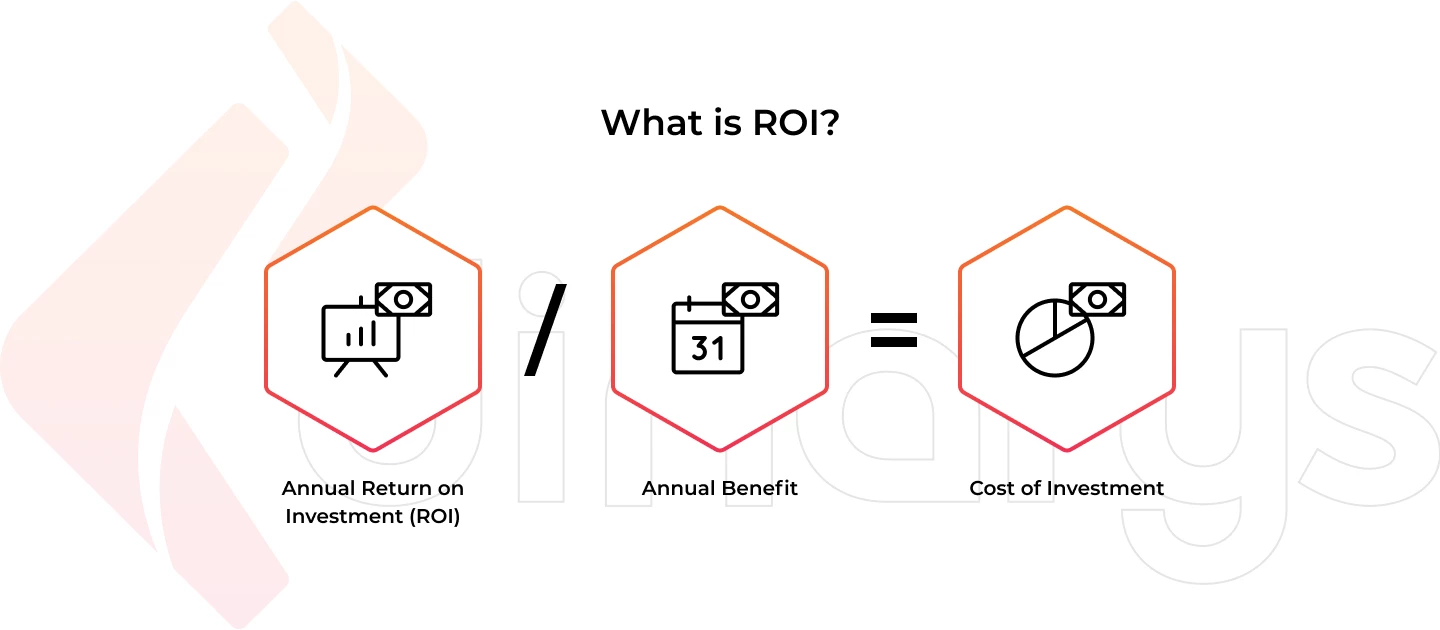
Regarding e-commerce, this measure can be used to determine the profitability of products relative to their cost. It is important to measure ROI because it provides a way to quantify and compare the effectiveness of different strategies, tactics, and investments within your business. By tracking ROI over time, you can measure the success of campaigns or initiatives and identify areas for improvement or opportunities for growth. What constitutes a good ROI for e-commerce businesses can vary depending on the industry and other factors. Generally, a 10% or higher ROI is an acceptable measure of success. However, this can range from as low as 6% to as high as 30%. If your ROI is lower than 6%, then it may be time to reconsider the strategies you are using or the products you are selling. Benchmarking is another critical factor and a measure of success as it allows you to compare yourself to similar businesses in your industry.
By measuring ROI, e-commerce businesses can make more informed decisions about how to grow their business. Knowing your ROI is an essential measure of success for any e-commerce business.
Here are some reasons why you should measure your ROI:

Measure the Effectiveness of Your Campaigns
Measuring the effectiveness of your campaigns and initiatives is essential, as this will allow you to identify areas that have been successful or need improvement.
Make More Informed Decisions
By having a measure of ROI, e-commerce businesses can make more informed decisions about how to grow their business and measure their success.
Identify Opportunities for Growth
Measuring your ROI can also help identify potential opportunities for growth, such as expanding into new markets or launching new products. By understanding your ROI, you can make more informed decisions about which strategies to focus on and where to invest time and resources.
Compare Your Performance against Industry Benchmarks
Benchmarking is another critical measure of success. It allows you to compare yourself to similar businesses in your industry and measure how your ROI performs relative to the competition. In conclusion, measuring return on investment is essential for e-commerce businesses. Knowing your ROI can provide valuable insight into where there are opportunities to focus or improve and measure your success against industry benchmarks.
By tracking and benchmarking your ROI over time, you can measure the effectiveness of campaigns and initiatives and identify potential growth opportunities. To measure return on investment for e-commerce businesses, tracking sales, costs, and expenses associated with each product or campaign is essential.
ROI Formula Calculation
Measuring ROI for e-commerce businesses is crucial to understanding your business, efficiency and whether it can be improved. There are several approaches to measuring ROI, but one of the most reliable methods is to use a formula known as the ROI Formula Calculation, which considers the total revenue your e-commerce business generates and the cost of goods sold (COGS). It measures ROI by subtracting COGS from total revenues and dividing it by all other costs associated with running your business. The result is a percentage that accurately measures how efficiently your e-commerce business is running. Measuring ROI accurately is essential, as it can give you the insights needed to make informed decisions about improving your e-commerce operations. By understanding what a good ROI looks like for your industry, you can measure your performance against benchmarks and determine areas of improvement. This will help you optimize and measure the performance of your e-commerce business.
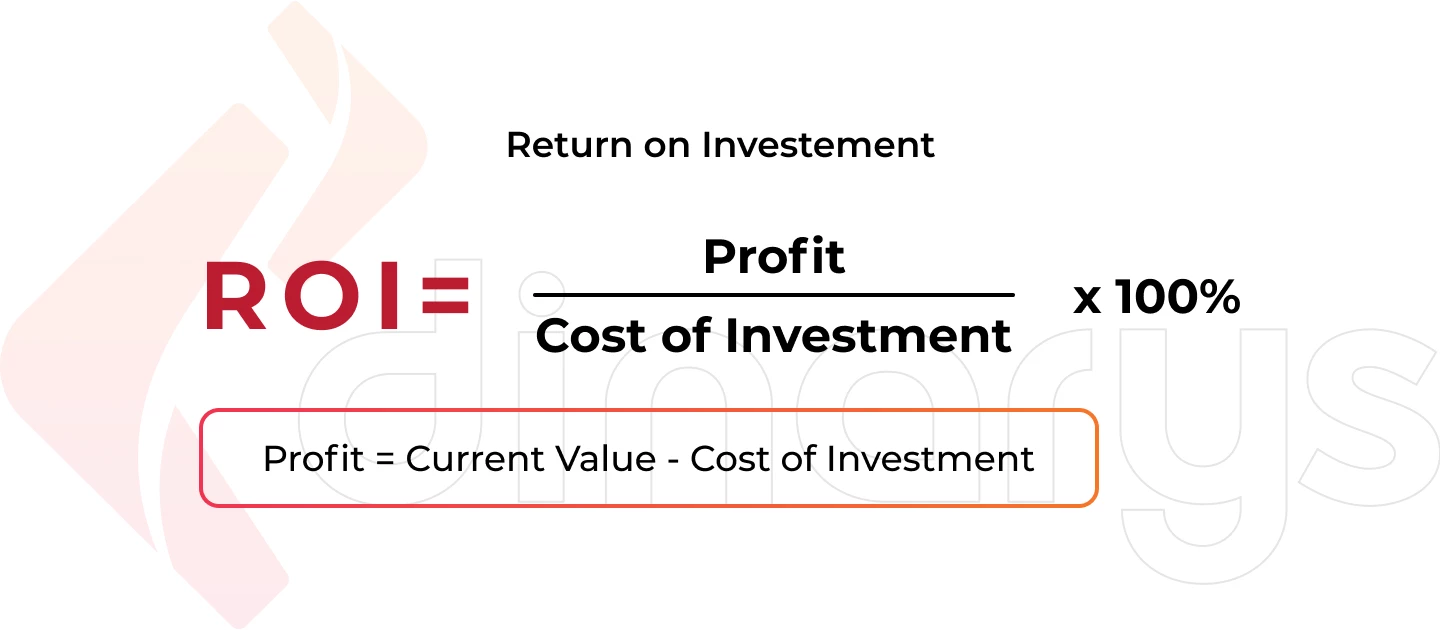
Additionally, it is essential to measure ROI over time. This will allow you to measure whether your efforts are paying off or if there are areas that need improvement. Measuring ROI over time can provide insights into customer behavior and buying patterns to maximize profits. You can ultimately make better decisions that will help increase sales and boost profits for your e-commerce business. Measuring ROI for e-commerce businesses is one of the best ways to measure performance, analyze customer behavior, and optimize operations. It is essential for staying competitive and maximizing profits.
How to Increase E-commerce ROI
With regard to increasing ROI for e-commerce, several ways exist to measure and track progress. As a business owner, it;s essential to measure your ROI to know which investments yield the biggest returns and where you should invest more resources.
Dinarys has put together some tips to measure and increase the ROI of your e-commerce business.
Improve Your Conversion Rates
One way to measure ROI is through conversion rates, or how many customers visit your site to take a desired action, such as buying a product or subscribing to an email list. You can measure this by looking at the number of visitors to your site and dividing it by the total sales or subscription rate. If you want to increase conversion rates, focus on optimizing the customer experience—make sure that it;s easy for customers to find what they;re looking for and provide them with helpful information about products and services.
Here are some tips for measuring and improving your e-commerce conversion rate:
- Analyze customer data to determine which products are the most popular;
- Make sure your website is well-designed, fast loading, and easy to navigate;
- Use A/B testing to measure changes in design or product placement;
- Track customers; behavior on your site.
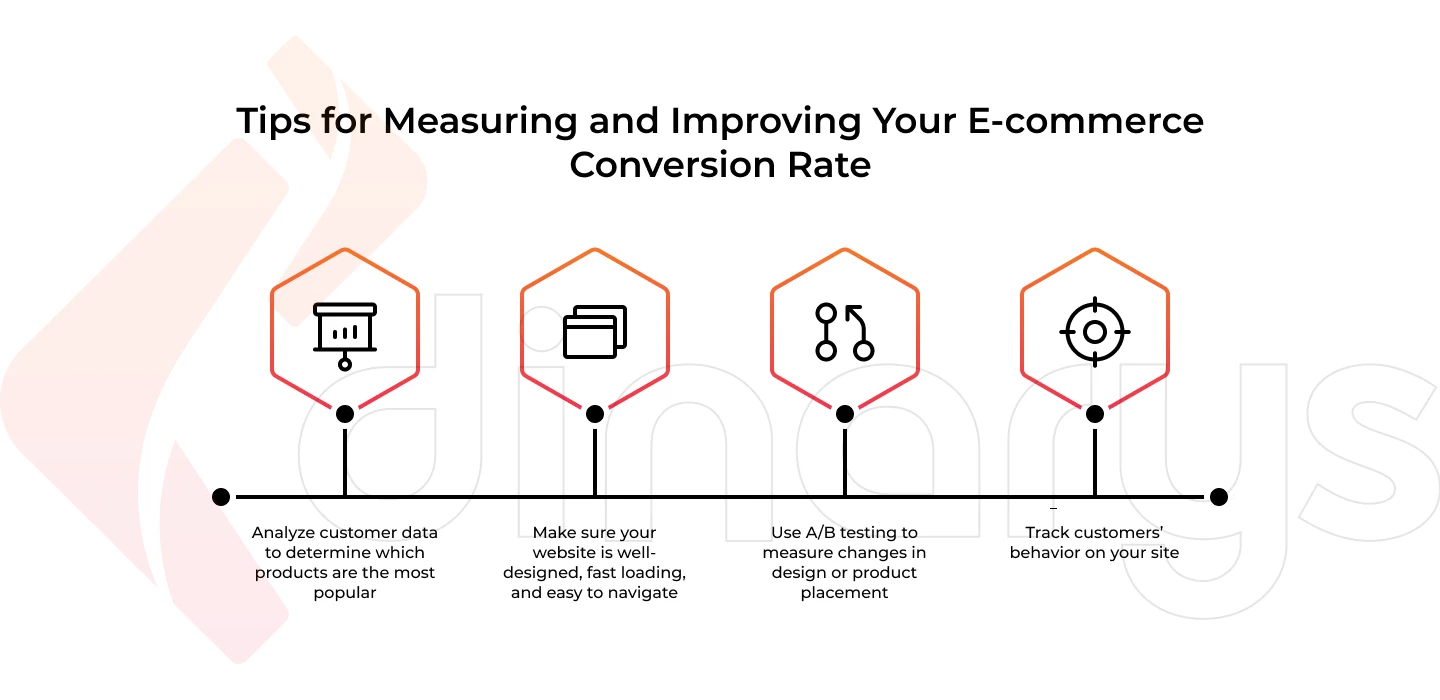
Increase Average Order Value (AOV)
Another measure of ROI for e-commerce is the average order value (AOV), which tells you how much money customers spend when they purchase from your store. AOV should be tracked regularly so you can measure progress against the goals of increasing it. There are a few ways to boost AOV:
- Offer discounts and coupons;
- Create bundles and promotions to encourage customers to buy more items in a single order;
- Provide incentives, such as free shipping or other rewards for larger orders;
- Cross-sell and upsell products.

Optimize Your Advertising Strategy
If you;re using paid advertising, measure ROI by looking at the cost per click (CPC) and cost per acquisition (CPA). If you;re seeing high costs with low conversion, it may be time to re-evaluate your strategy—try different ad networks or experiment with other types of ads.
When measuring ROI for e-commerce, there are no hard and fast rules about what constitutes a “good” return on investment. However, some benchmarks to measure yourself against include:
- A conversion rate of 1-2% is considered acceptable;
- A good average order value is between $50 and $100;
- An acceptable CPC should be below $1 for most industries;
- A reasonable CPA is around $25.
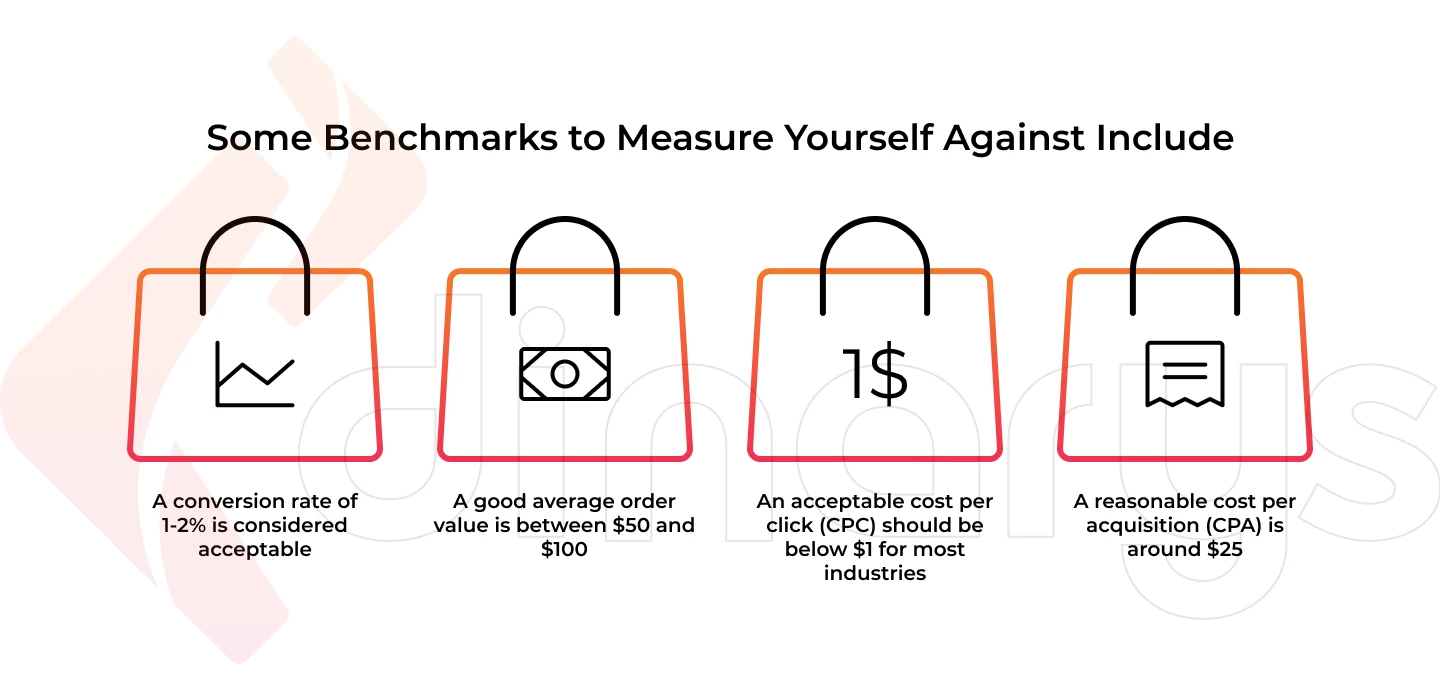
By measuring and improving your e-commerce ROI, you'll better understand where your investments yield the best results and optimize your strategy accordingly. With a well-thought-out plan, you can measure success and maximize your ROI.
Most Important ROI Report Metrics You Should Include
Measuring ROI for e-commerce is essential for understanding whether your efforts are netting you a profit. There are numerous metrics to measure, but some should be included in any ROI report to give you the complete picture of success. These key metrics include:
PPC Traffic
The amount of traffic driven to your website from pay-per-click (PPC) advertising campaigns is a measure of the effectiveness of those campaigns. Monitor how much PPC traffic you receive and see if it leads to increased sales. Every e-commerce business should measure PPC traffic to determine if they're getting a good return on their investment. Remember, you need to measure the cost of each campaign against the number of sales it generates.
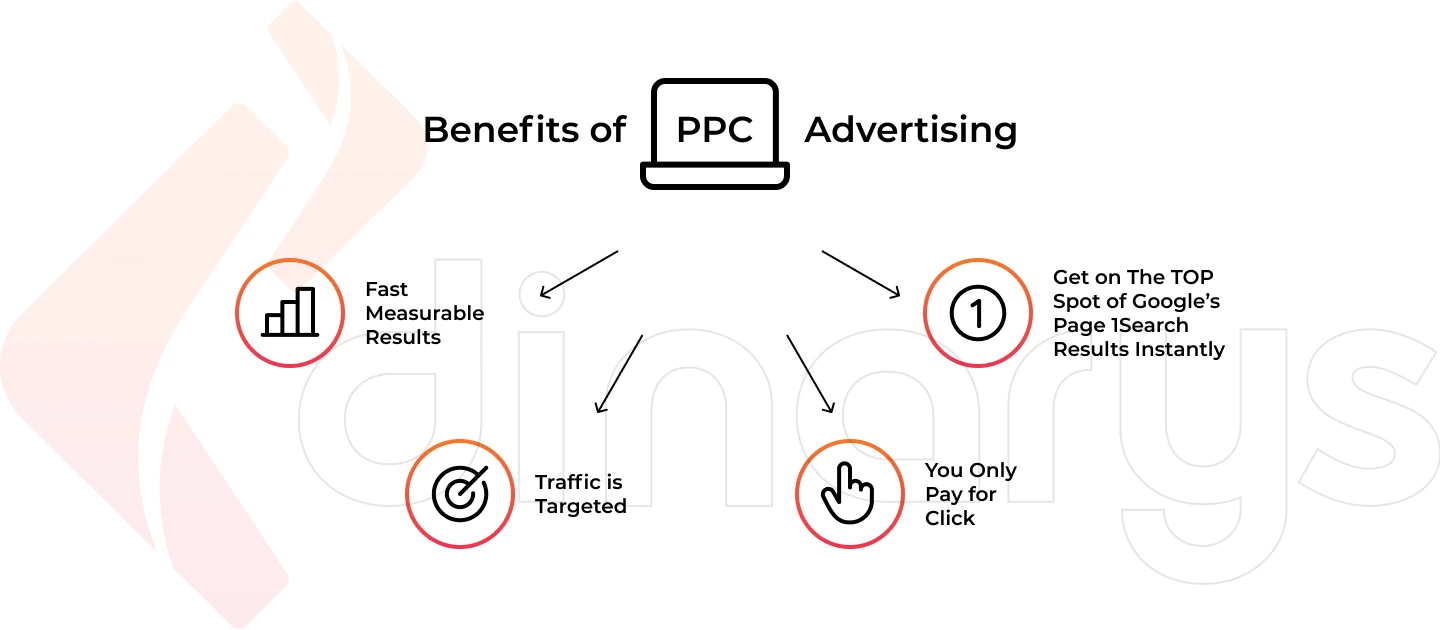
Here are the PPC traffic metrics you should measure:
- Click-through rate (CTR)
- Cost per click (CPC)
- Conversion rate
SEO Traffic
Search engine optimization (SEO) efforts are another measure of success for e-commerce businesses. By understanding how much traffic is driven to your website from organic search results, you can measure whether your SEO strategies are working and make adjustments if needed. Track how many people visit your page as a result of organic searches on Google or other search engines, as well as how many people complete a purchase from this traffic source.
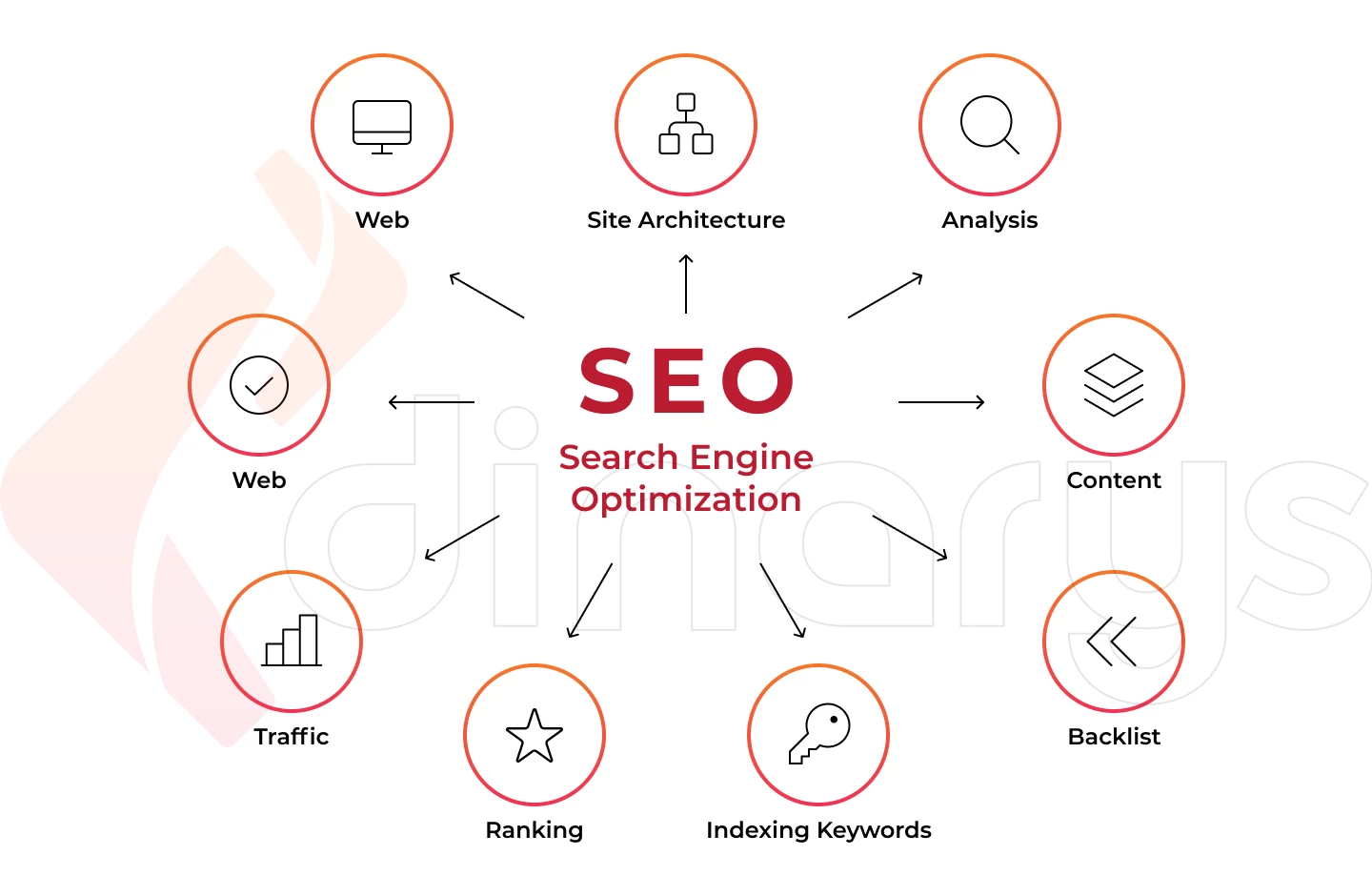
Here are the SEO metrics you should measure:
- Average organic search CPC
- Organic search visits
- Bounce rate
- Conversion rate
Customer Acquisition Costs (CAC)
Measuring customer acquisition costs is a way to measure the success of an e-commerce business. This metric measures the money spent to gain a new customer and how much it takes to attract potential customers. Measuring this is essential for determining your ROI from email marketing, social media posts, PPC campaigns, and more.

Here are the metrics for measuring customer acquisition costs:
- Cost per lead (CPL)
- Cost per visitor (CPV)
- Customer lifetime value (CLV)
Average Order Value (AOV)
Average order value measures the success of an e-commerce business and helps determine ROI. Measuring AOV to determine how much each customer spends on your site over time is vital. By understanding this metric, you can adjust product pricing or marketing campaigns to increase AOV and measure the impact of these changes on ROI.
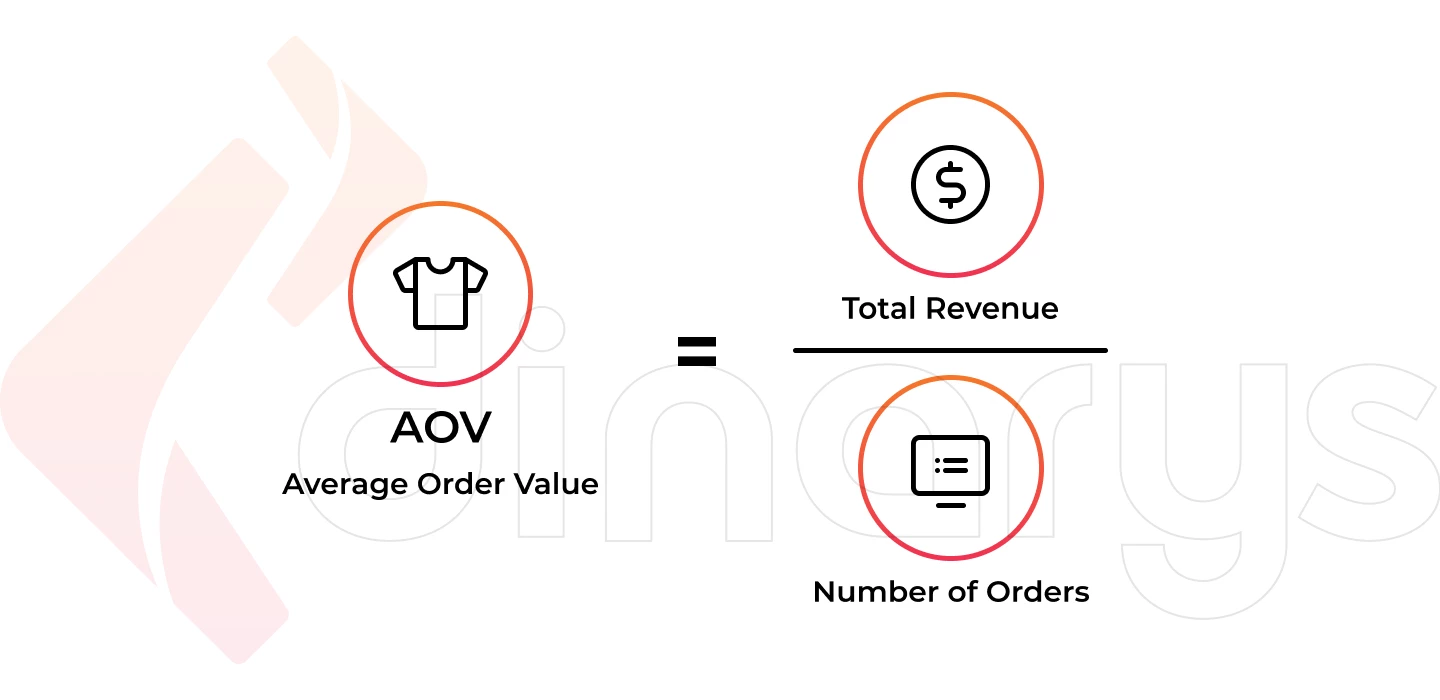
Here are the average order value metrics to measure:
- The average revenue per user (ARPU)
- Average items per transaction
- Gross margin by product type
Direct Traffic
Direct traffic measures the number of people visiting your website directly. This metric is vital because it measures the success of any branding or marketing campaign by understanding how many potential customers return to your site directly. By measuring this metric, you can determine the effectiveness of branding and measure ROI from campaigns, such as television ads, print ads, and more.

Here are the direct traffic metrics to measure:
- Repeat visitor rate
- Average visit duration
- Number of page views per session
Social Media Traffic
The number of people visiting your website from social media links is an essential measure of success for e-commerce businesses. This measures the success of your posts, campaigns, and engagement efforts on social networks like Instagram, Facebook, and Twitter. Monitor the amount of traffic coming from each social network to measure organic reach and any sponsored content you may have on those platforms.

Here are the social media traffic metrics to measure:
- Followers and Likes
- Impressions and Engagement per post
- Conversion rate (CR)
Email Traffic
Email campaigns are a robust measure of success for e-commerce businesses. It can be used to reach new customers, keep existing ones engaged, and measure the success of any promotions or sales you may have going on. Track the number of emails sent that result in website visits, measure open rates and track click-through rates.
Here are the email metrics to measure:
- Open rate
- Click-through rate (CTR)
- Conversion rate from emails
Referral Traffic
Referral traffic measures the number of people visiting your website due to links from outside sources, such as blogs, directories, and other websites. It will help you measure ROI on any content syndication campaigns or influencer outreach activities.
Here are the referral traffic metrics to measure:
- Number of inbound links
- Number of referring domains
- Conversion rate from referrals
By measuring the metrics above, you can determine the ROI for e-commerce. This will help you make better decisions to drive more sales and increase revenue. Additionally, knowing these metrics helps you set benchmarks and measure your performance against them. Use these as a starting point to measure the ROI for your e-commerce business.
Through all these metrics, you can measure your e-commerce business; success, determine your ROI, measure performance against average ROI benchmarks, adjust marketing campaigns and pricing to increase AOV, measure the success of any branding or referral efforts, and track email campaigns for better reach and engagement with customers.
5 Best Tools for Creating Revenue Dashboards
Analyzing and measuring ROI is an essential task for any e-commerce business. Without it, you won;t be able to determine if the investments made yield positive returns. One of the best ways to measure ROI for e-commerce is by creating revenue dashboards that provide detailed insights into the efficacy of your website, campaigns, and other e-commerce efforts.
Fortunately, various tools are available for creating revenue dashboards that measure everything from website performance to product sales. Here, we;ll look at five of the best tools to measure ROI in e-commerce:
Google Analytics
One of the most popular and comprehensive web analytics tools, Google Analytics, provides in-depth insights into website performance. It tracks metrics such as page visits, cost per click (CPC), average revenue per user (ARPU), and more. Additionally, it can measure ROI for campaigns such as email marketing or search engine optimization (SEO).
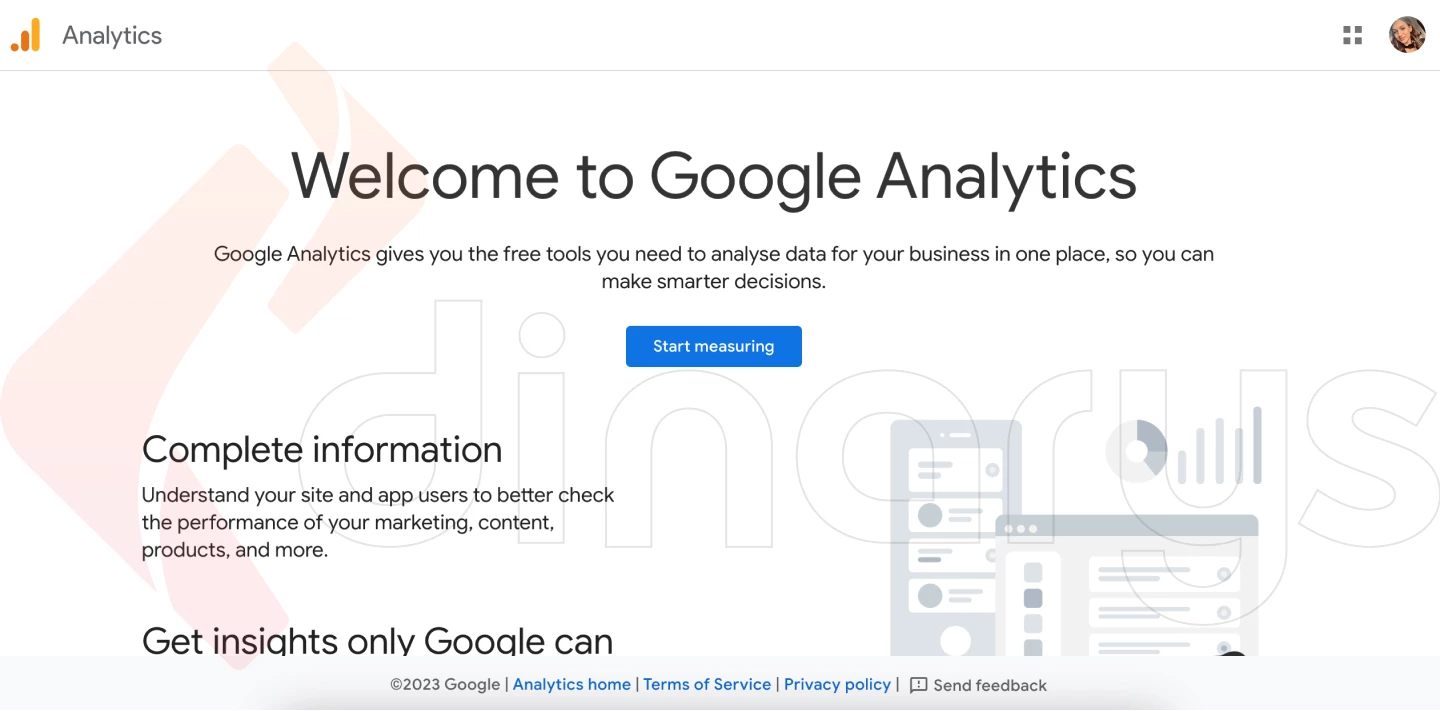
Mixpanel
This analytics platform provides detailed insights into user behavior within websites and mobile applications. It can measure ROI for e-commerce by tracking user interactions, page views, and product sales.
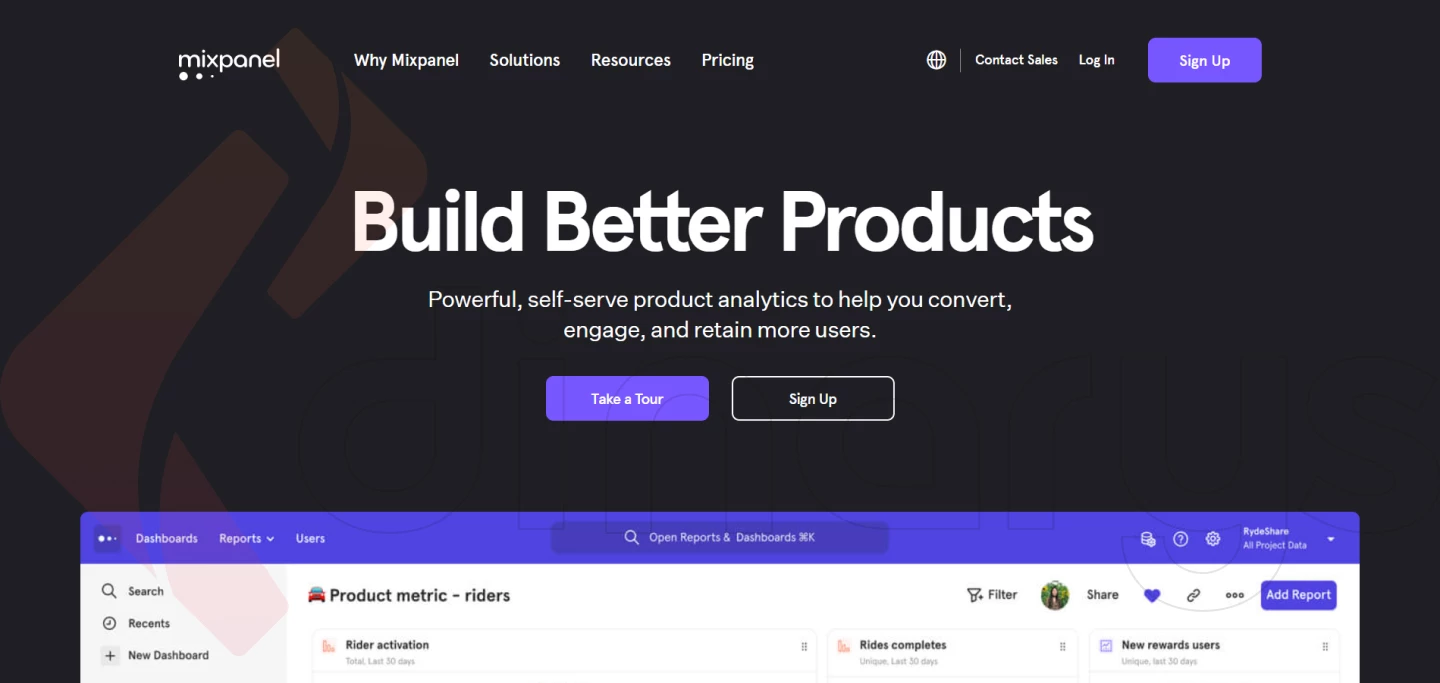
Adobe Analytics
Another comprehensive web analytics tool, Adobe Analytics, provides insights into website performance and offers a wide range of features for tracking ROI. It can measure metrics such as visits, page views, cost per acquisition (CPA), time on site, and more.
Kissmetrics
A powerful analytics platform, Kissmetrics, allows businesses to measure ROI from email marketing or SEO campaigns and measure user behavior within a website or application.
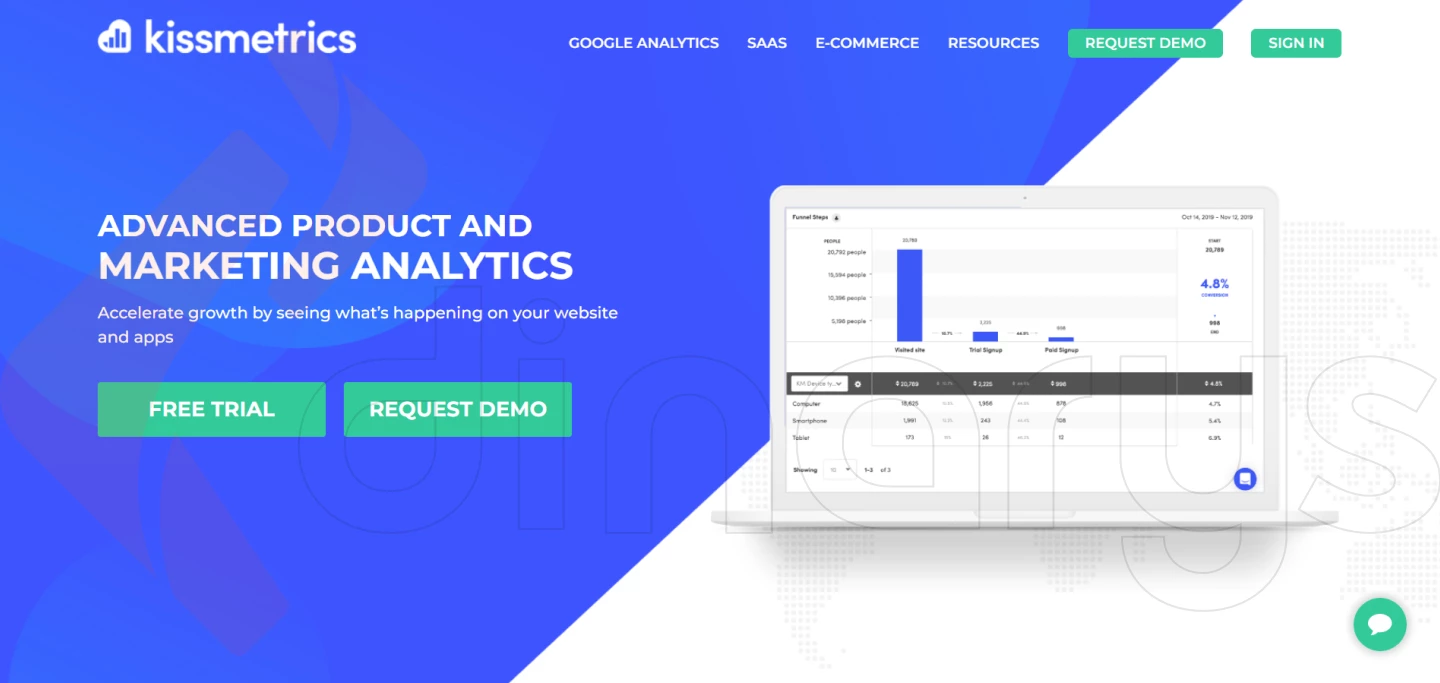
HubSpot
A widespread customer relationship management (CRM) platform, HubSpot provides a range of features for tracking ROI from e-commerce campaigns and measuring user interactions. It can measure metrics such as website visits, leads generated, and product sales.
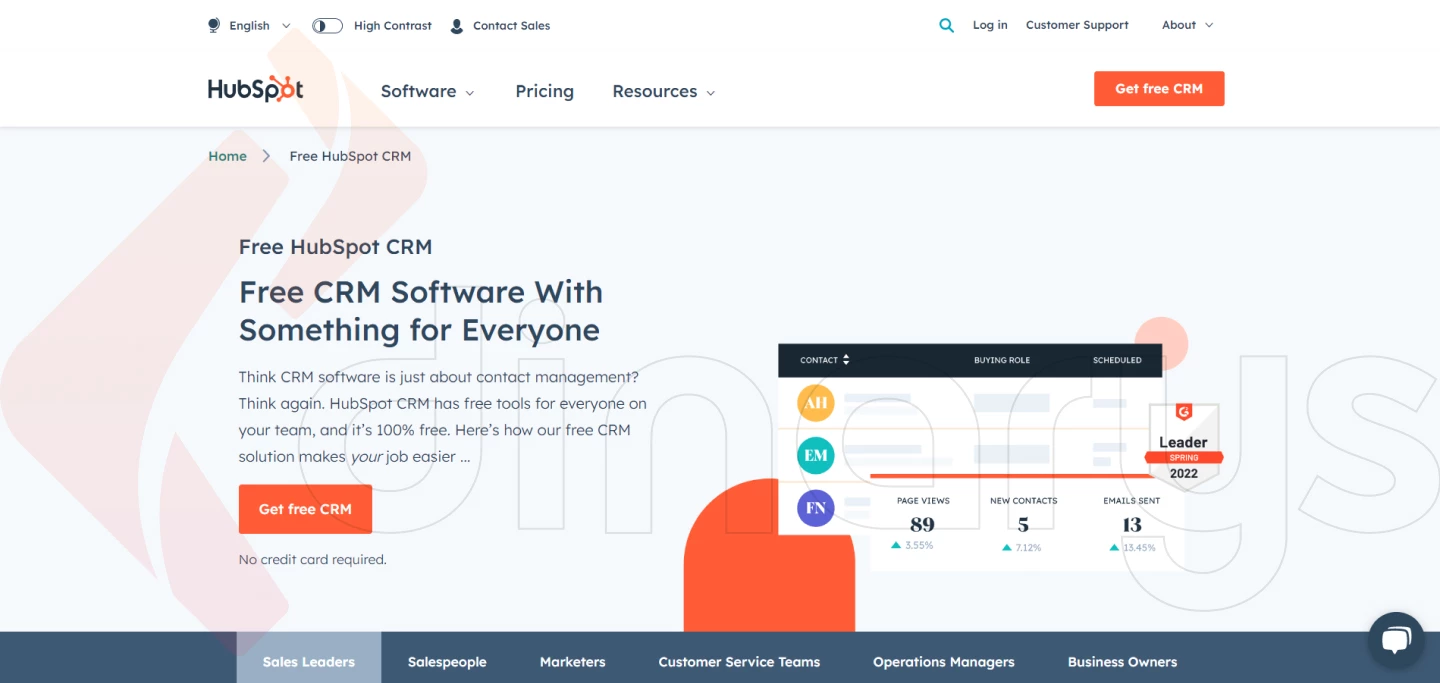
By using one of these five tools to creating revenue dashboards, you can measure ROI for e-commerce more accurately. You'll gain insights into the efficacy of your website, campaigns, and other investments, measure user behavior, and understand a good ROI for e-commerce. This will help you make better data-driven decisions and achieve tremendous success.
Understanding ROI benchmarks in e-commerce is essential for maximizing your investments and boosting the bottom line. Leverage these five tools to measure ROI more accurately and to measure user behavior within your website or application. By doing so, you'll be able to make data-driven decisions and measure the success of your e-commerce efforts.
To Sum Up
Measuring return on investments (ROI) for e-commerce can be complex. It involves more than just sales numbers because many costs that need to be considered are associated with running an online business. The most critical measure of success is the overall profitability of your company and understanding how different strategies and tactics affect it. Measuring ROI regularly is essential to making proactive decisions and continuously improving performance. Additionally, it helps to have some industry benchmarks to measure yourself against to gain more meaningful insights into where your business stands. With the right strategy and measurements, e-commerce businesses can drive growth and increase profitability.
Dinarys is here to help you measure ROI for your e-commerce business. Our team of experts will take the guesswork out of ROI measurement, making it easy to measure and understand the financial performance of your e-commerce business. We can help you develop key performance indicators (KPIs) that measure success in various areas, from customer acquisition, retention, and engagement to growth or profitability. Contact us today to get started. We look forward to helping you measure the ROI for your e-commerce business and maximize your success!
Lassen Sie Profis Ihre Herausforderung meistern
Unsere zertifizierten Spezialisten finden die optimale Lösung für Ihr Unternehmen.



